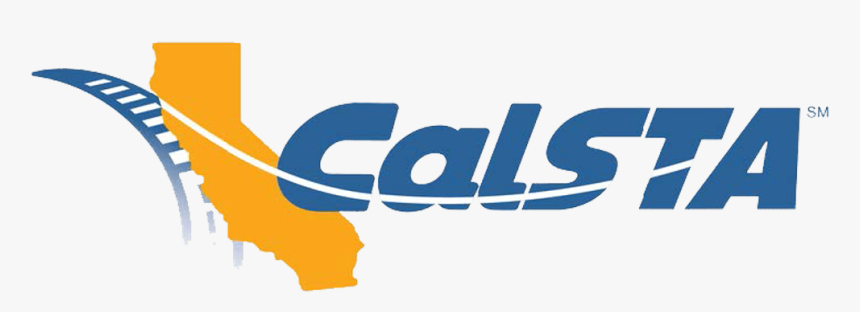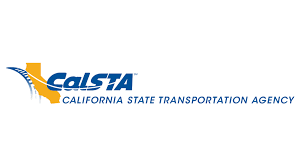The California State Transportation Agency (CalSTA) oversees California’s transportation departments. It plays a key role in coordinating and developing state transportation policies.
With an aim to enhance California’s transportation systems, CalSTA ensures the smooth operation and integration of the state’s various transportation entities. It prioritizes safety, sustainability, and innovation to address the diverse mobility needs of one of the nation’s most populous states.
CalSTA is instrumental in shaping the future of travel and commerce by implementing cutting-edge transportation solutions. The agency’s commitment to improving infrastructure and fostering efficient travel resonates through its diverse projects, from highway improvements to advancing public transit networks. Engaging with communities and stakeholders, CalSTA works toward a cohesive, accessible, and environmentally conscious transportation landscape.

Credit: www.gosbcta.com
The Evolution Of California’s Transportation Infrastructure
The Evolution of California’s Transportation Infrastructure is a journey through time. It highlights the state’s commitment to connecting communities and powering economies. From dusty trails to digital highways, California has always been at the forefront of transportation innovation.
Early Developments And Milestones
California’s transportation story began with simple paths. These paths were carved by indigenous people and early settlers. The Gold Rush era saw the rise of stagecoaches and steamships. The transcontinental railroad, completed in 1869, was a major milestone. It linked California with the rest of the country.
- 1827: El Camino Real connected 21 missions across California.
- 1869: First Transcontinental Railroad completed.
- 1901: State Highway System began with Bureau of Highways formation.
- 1937: Golden Gate Bridge opened, showcasing engineering prowess.
Modern Advancements And Projects
Today, California leads with groundbreaking transportation projects. High-speed rail plans promise to revolutionize travel within the state. Sustainable transport is a key focus. Electric vehicle infrastructure is rapidly expanding. The California State Transportation Agency (CalSTA) oversees these modern efforts.
| Year | Project | Impact |
|---|---|---|
| 2022 | Expansion of EV Charging Stations | Boost to clean energy vehicles |
| 2023 | High-Speed Rail Construction | Reduced travel time across the state |
| 2025 | Smart Traffic Management Systems | Improved flow, reduced congestion |
Such projects ensure that California remains a leader in innovative transportation. They improve quality of life and support economic growth. The state’s transportation infrastructure continues to evolve, setting benchmarks for the rest of the world.

Credit: metroprimaryresources.info
Current Challenges Facing California’s Transportation
The California State Transportation Agency oversees a vast network of travel routes and systems. This network faces significant challenges. Among these are urban congestion, environmental impacts, and the need for sustainable solutions.
Urban Congestion And Mobility Issues
California’s cities are notorious for traffic jams. Los Angeles and San Francisco rank high for gridlock. This congestion leads to several issues:
- Longer commute times
- Increased stress for drivers
- Higher fuel consumption
- Delayed emergency services
To tackle these problems, the state implements various strategies:
- Expanding public transit systems
- Encouraging carpooling
- Developing smart traffic management
- Building more bike lanes
Environmental Impacts And Sustainability Efforts
Transportation is a major contributor to greenhouse gases in California. The state aims to reduce these emissions. Key sustainability efforts include:
| Effort | Goal |
|---|---|
| Electric Vehicle Adoption | Increase EV use statewide |
| Public Transit Upgrades | Make buses and trains cleaner |
| Green Infrastructure | Build eco-friendly transport options |
These steps help cut pollution and create a greener California.
California State Transportation Agency’s Role And Responsibilities
The California State Transportation Agency (CalSTA) plays a critical role in shaping the transportation systems of California. As a cabinet-level agency, it oversees a vast network of highways, railroads, and public transit. Its mission involves ensuring safe, sustainable, and efficient travel options for all Californians.
Governance And Policy-making
CalSTA sets the stage for transportation governance in California. It crafts policies that guide the state’s transportation plans. These policies aim to improve mobility and foster economic growth. CalSTA collaborates with various entities, including regional and local agencies, to develop comprehensive transportation strategies.
- Develops statewide transportation policy
- Coordinates with regional agencies
- Advocates for sustainable and safe transportation
Funding And Resource Allocation
CalSTA plays a key role in distributing funds for transportation projects. It ensures the right projects receive adequate resources. Funding priorities are set to improve infrastructure, enhance public safety, and support economic vitality. CalSTA allocates resources to maximize the benefits for Californian communities.
| Area | Focus |
|---|---|
| Infrastructure Improvement | Allocates funds for roads and bridges |
| Public Transit Systems | Supports bus and rail service expansion |
| Safety Enhancements | Invests in safer travel options |

Credit: www.linkedin.com
Innovative Transportation Initiatives In California
California stands at the forefront of transportation innovation. The state’s commitment to sustainable and efficient mobility is evident through various projects. These initiatives aim to reduce carbon emissions, improve public transit, and enhance connectivity.
High-speed Rail And Public Transit Projects
The California High-Speed Rail is set to revolutionize travel. Upon completion, it will connect mega-cities, boost the economy, and provide a green alternative to flying or driving.
- Connects San Francisco to Los Angeles in under three hours
- Plans to extend to Sacramento and San Diego
- Estimated to carry millions of passengers annually
Public transit is also getting a facelift. Cities like Los Angeles and San Francisco are expanding subway lines and bus routes. These projects aim to reduce traffic congestion and lower pollution levels.
| City | Project | Impact |
|---|---|---|
| Los Angeles | Metro Expansion | Connects more neighborhoods |
| San Francisco | Central Subway | Improves downtown access |
Adoption Of Autonomous And Electric Vehicles
California encourages the use of electric vehicles (EVs). Tax incentives and rebates are available for EV buyers. This makes owning an EV more affordable.
Autonomous vehicles (AVs) are another focus. The state allows testing of self-driving cars on public roads. This paves the way for future adoption. AVs promise to reduce accidents and increase mobility for those unable to drive.
- Statewide charging stations for EVs
- Grants for EV purchases
- AV pilot programs in Silicon Valley
Frequently Asked Questions
Does California Have A Department Of Transportation?
Yes, California has a Department of Transportation, commonly known as Caltrans. It oversees highway, bridge, and rail transportation planning, construction, and maintenance.
What Is The Difference Between Caltrans And Calsta?
Caltrans, the California Department of Transportation, manages highway, bridge, and rail transportation. CalSTA, the California State Transportation Agency, oversees transportation-related departments, including Caltrans, setting broader transportation policy.
What Does Calsta Do?
CalSTA, short for California State Transportation Agency, oversees California’s transportation departments, formulates policies, and ensures efficient, effective transportation systems.
Conclusion
Exploring the initiatives of the California State Transportation Agency reveals a commitment to innovation and sustainability. This agency is pivotal in shaping a future where travel is both efficient and eco-friendly. For residents and visitors alike, understanding these developments promises enhanced connectivity and improved quality of life across the state.